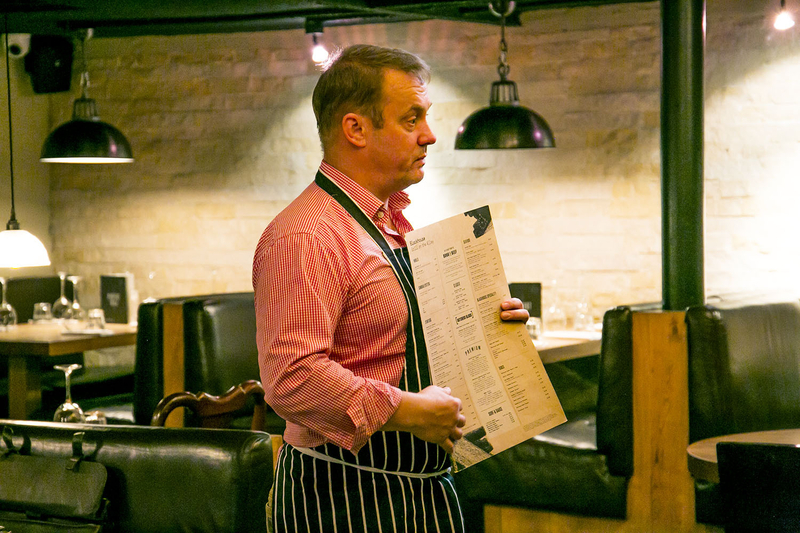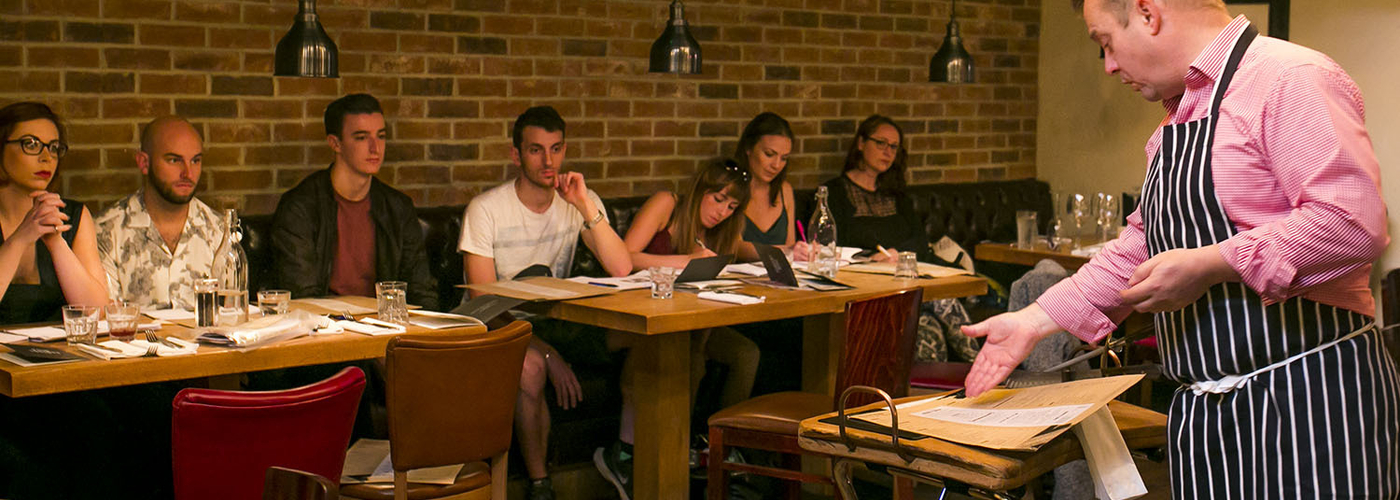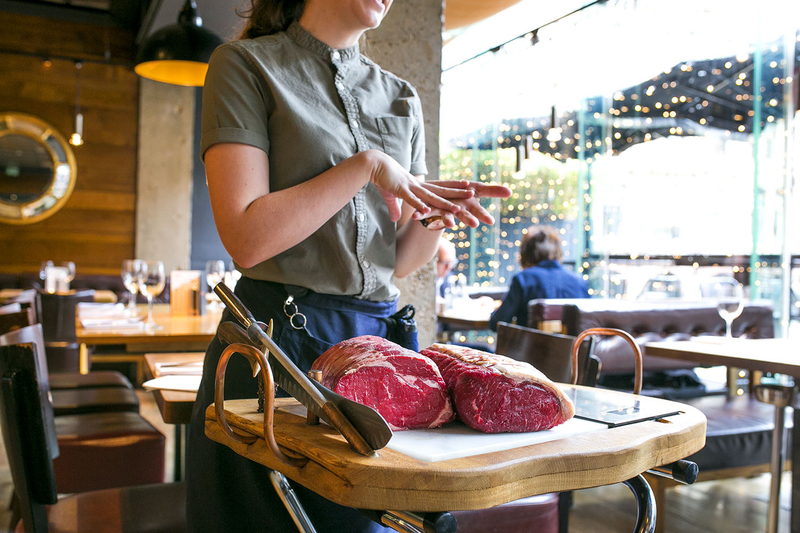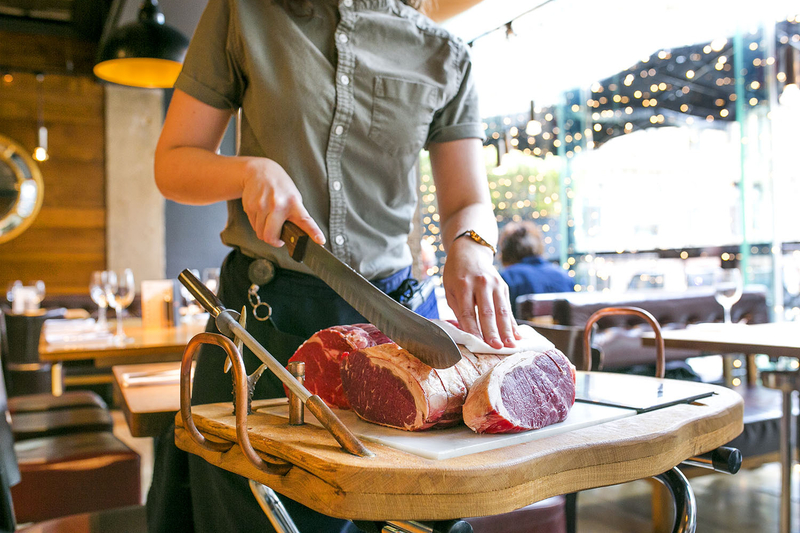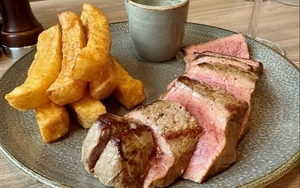Are you sitting comfortably? Then we’ll begin….
The Blackhouse group of steak restaurants, including Grill on the Alley and Grill on New York Street in Manchester, are well known for their attention to detail and comprehensive staff training.
When you visit one of their restaurants for a meal, remember that your server isn’t just taking your order and bringing your plate over to you. Every Blackhouse team member has been through hours of rigorous training; learning about beef provenance, steak cuts, cooking techniques and knife sharpening skills. They are put through their paces so they are able to genuinely enthuse about the food they serve and are equipped with the knowledge to answer any questions their guests might have.
Confidential sent one of our writers to a Blackhouse training session to brush up on their steak know-how. This is what they discovered.
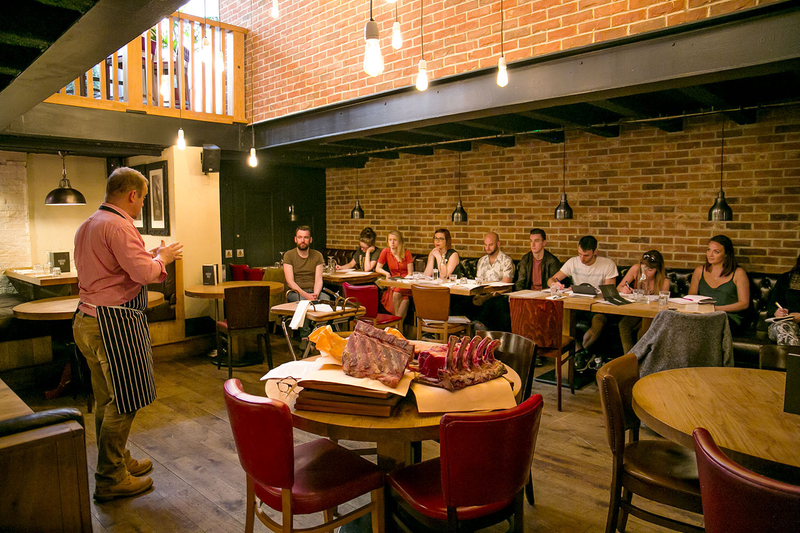
So what exactly is the book of beef?
It’s a comprehensive staff training manual, but Blackhouse are working on a more accessible table top version so any guests interested in delving into a little more detail regarding the provenance of their steak can find all the information they need.
What’s the Butcher’s Block?
Blackhouse’s premium quality steaks are chosen from countries that are well known for producing the best cut of that beef; English Galician Sirloin, Australian Aberdeen Black Fillet, Argentinian Ribeye, etc. But the Butcher’s Block is a special limited edition single breed which has been selected at market by their butcher, then dry aged in their Himalayan rock salt maturation chamber. Whole joints of beef are brought over to the table and steaks are cut to order and weighed in front of each guest before being taken to the kitchen to be cooked on the grill. The price is calculated per 100g with a minimum of 300g.
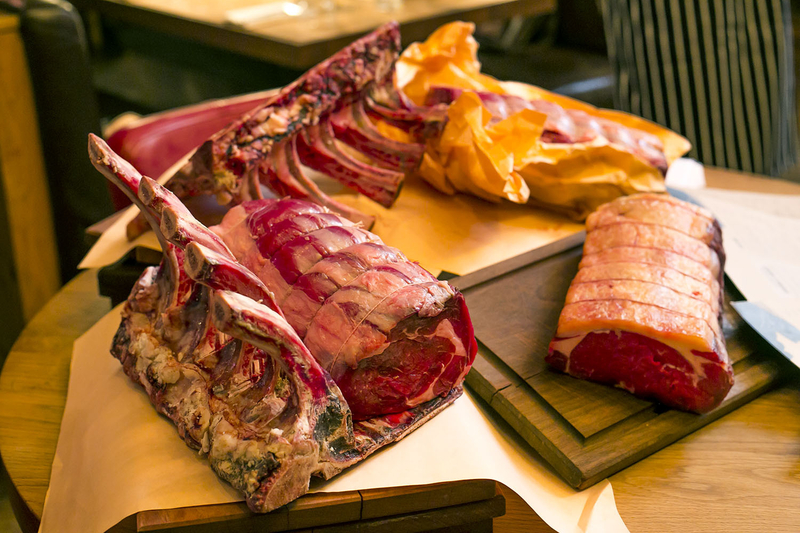
Good steak starts in the field
Getting a really good steak is an expensive process which, apart from individual breed, depends on the quality of feed, sunshine, soil, diet, water and lifestyle, but Blackhouse guarantee value for money. Guest can be absolutely confident that they are buying food of the highest quality. All the meat is completely free of artificial hormones, and Blackhouse have developed a close relationship with farmers and butchers to make sure they can source what their customers want.
But there’s still work to do before it reaches the plate
Blackhouse are rigorous about storing their beef joints so that each steak can be served in their optimum condition. Each cut is trimmed, hung and matured until it’s ready for service.
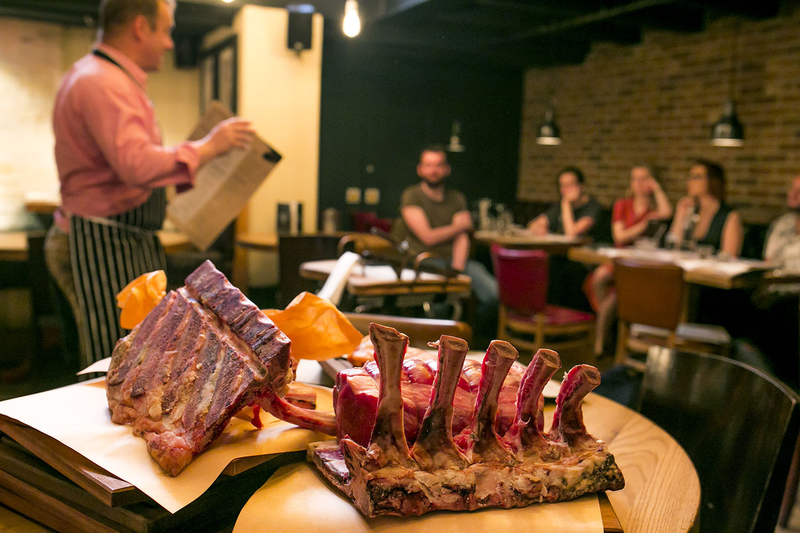
Tell me more about the Himalayan Salt Chamber. Does it really make any difference?
It’s an expensive piece of kit and is a great way to get the best out of storing and dry-ageing beef to concentrate the natural flavour. The salt doesn’t add any discernable salty flavour to the meat - it draws the moisture out of the air. Storing, ageing and hanging beef properly is a continuation of the process begun by the farmer. Each joint is stored carefully on drying racks in the chamber on a sheet of ‘peach paper’ to absorb any excess moisture and allowing the beef to ‘breathe’ on both sides.
How do you know when beef is ready for eating?
Chefs are trained specially to manage the rotation of beef while it matures so it can be brought out of the fridge at the correct time. They look for a number of quality points including the fresh aroma, clean smooth texture, creamy fattiness and ideal marbling, the right colour (it should be turning a darker red), it should be firm to the touch and not sticky.

That’s all well and good, but what about the cooking?
Blackhouse restaurants have all had special British Synergy Grills installed, which are more technologically advanced. Gone are the days of open gas burners and charcoal grills. Ceramic is the best material for the job to make sure the chefs are getting the best out of the beef rather than overpowering it with a charred flavour. The Synergy creates a vortex which heats up the bars of the grill and keeps the temperature underneath even. The chefs are also careful to bring the meat out at the correct time (it should never be cooked straight from the fridge) and not to salt the meat too early – this can bring out more moisture, preventing the outer layer from getting that delicious seared crust.
…and they all lived happily ever after. Well that’s the theory of why Blackhouse steaks are so delicious. If it’s more of a practical lesson you’re after, get down to Grill on New York Street or Grill on The Alley and see for yourself.
